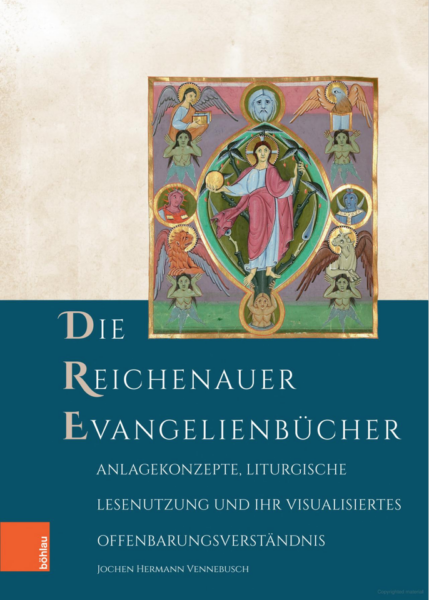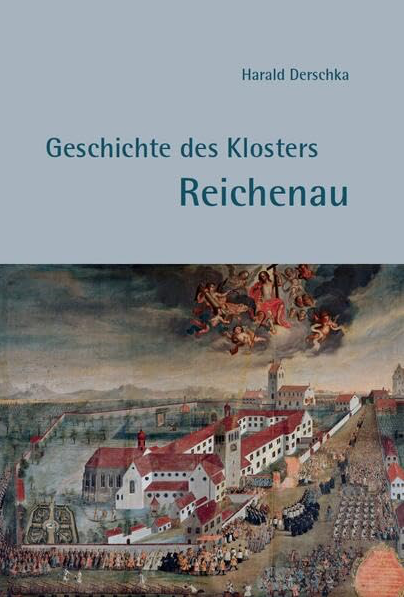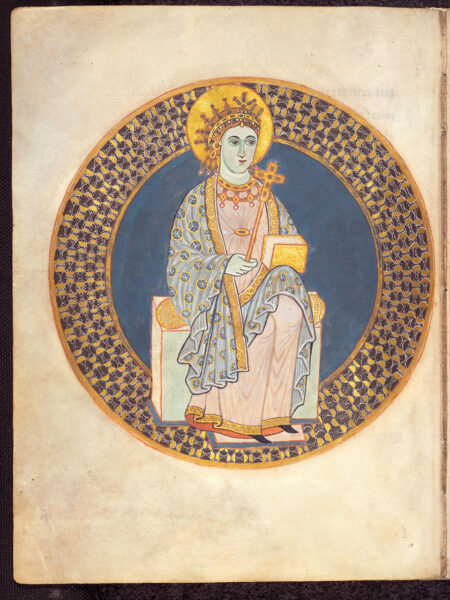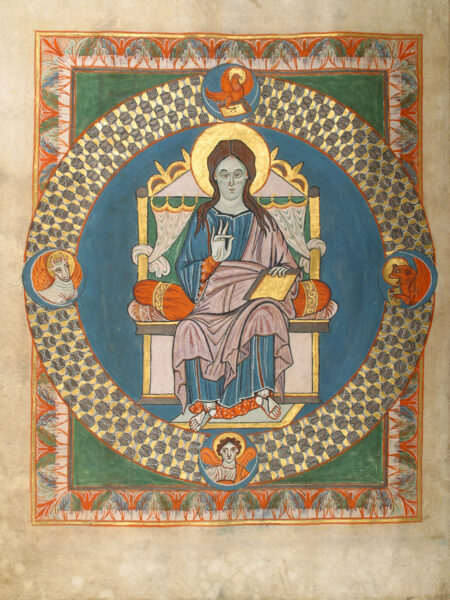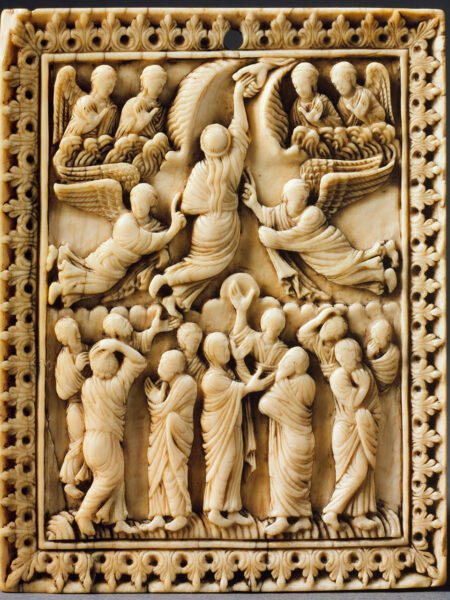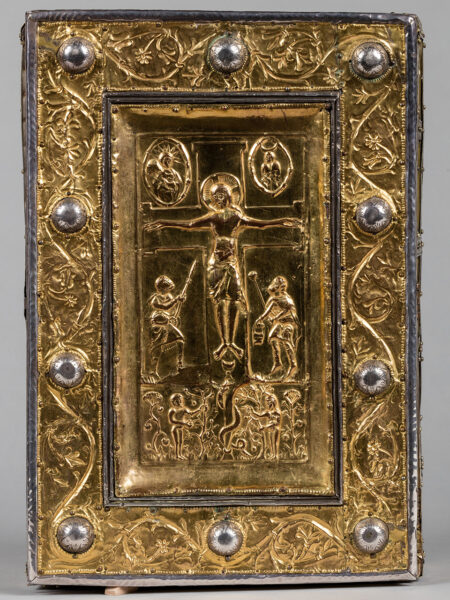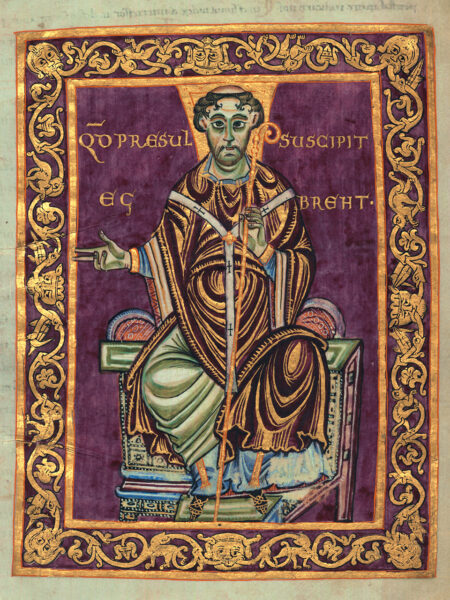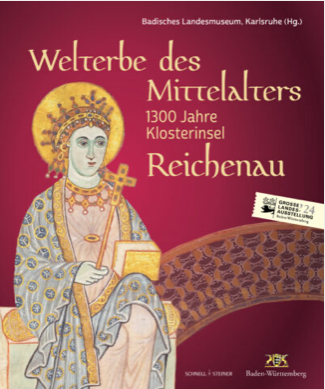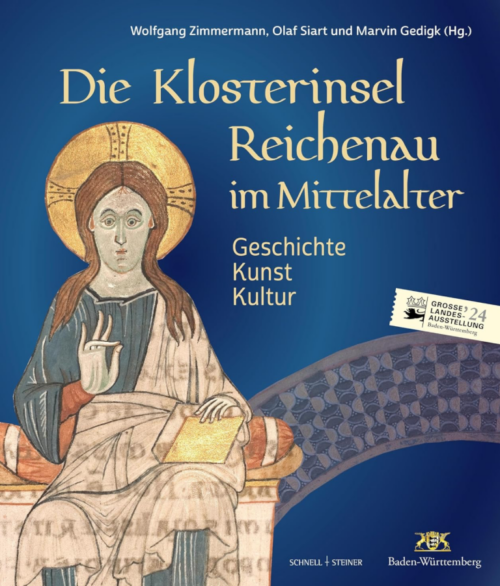This year, the Abbey at Reichenau celebrates its foundation in AD 724, the first monastery in present-day Germany. The anniversary is celebrated with a major exhibition in Konstanz.
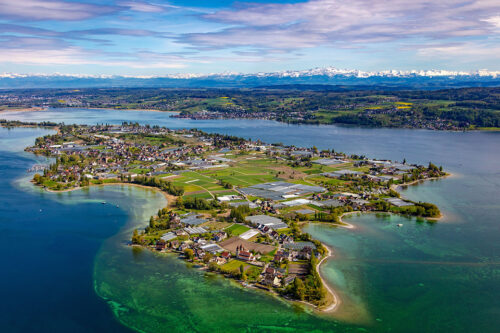
In 734, St. Pirmin founded the first monastery in present-day Germany Located on the isle Reichenau in Lake Constance (Bodensee) outside the city of Konstanz, the Abbey soon flourished as an influential religious and cultural centre, educating clerks for the ducal and imperial chanceries. In the 9th century, a significant library was built. Also, the abbey housed a famous scriptorium, a school and an artists’ workshop leading to its status as the most significant producer of lavish manuscripts at the turn of the first millennium. Thus, the Abbey produced a series of important imperial handbooks for the use of the Ottonians and later Salians, reaching its apex at the beginning of the 11th century.
In 2000, The Reichenau Abbey was inscribed on the UNESCO World Heritage, and in 2023 the manuscripts followed.
The Exhibition
The exhibition in Konstanz appears to adopt the usual format with several precious loans covering the impressive artistical heritage accompanied by the publication of a massive catalogue in two volumes. At the centre are the works witnessing the monastery foundation and the architecture, the founders and saints, life according to the Benedictine Rule, the liturgy, and everyday life. The exhibition intends to offer a comprehensive picture of the monastic existence of Reichenau.
Already in the first room of the exhibition, important monastery founders from Lake Constance and the High Rhine as well as significant saints of the island make their appearance as life-size sculptures: Pirmin, Ottmar, Gallus, Scholastica, and Benedict. In honour of the latter, the Baden State Museum has negotiated the inclusion in the exhibition of one of the most important Swiss historical documents within the Abbey Library of St. Gallen: The oldest surviving manuscript of the Benedictine Rule in the German-speaking world will travel to the exhibition in Konstanz – an appreciation of the anniversary and the continuation of a tradition of exchange between the two abbeys that began in the Middle Ages.
Also, the exhibition will be filled with works of art of national and international importance. For the first time, a collection of the most magnificent manuscripts returns to the place of their origin. The loans include not only five manuscripts from the spectacular UNESCO World Documentary Heritage, such as the Egbert Psalter from the Italian Museo Archeologico Nazionale in Cividale, but also other extremely rare and precious treasures such as the so-called Reichenau School Notebook, written by an Irish monk at Lake Constance, and considered one of the most important surviving linguistic testimonies of Old Irish to this day, Apart from vocabulary exercises, and mathematical notes, it also holds a poem in Old Irish about a little white cat named Pangur Bán. Another highlight is the Hillinus Codex from the Diocesan and Cathedral Library in Cologne, featuring the only existing depiction of the Hildebald Cathedral, the Carolingian predecessor of the present-day Cologne Cathedral.
Everyday objects such as a small ivory dice testify to the former monastery life and prove that the Reichenau monks also enjoyed playing games. The valuable Andreas Shrine from Trier also travels to Konstanz. The conspicuous altar once housed special relics: In a forged golden foot with gemstone-studded sandal straps, the sole of the holy apostle Andrew was kept – inside was also a nail from the Cross of Christ and relics of Peter. Since bishops in the Middle Ages were practically inclined, the bishop could carry this shrine on his travels and celebrate Mass on the go – a fascinating example of “mobile work” in the Middle Ages.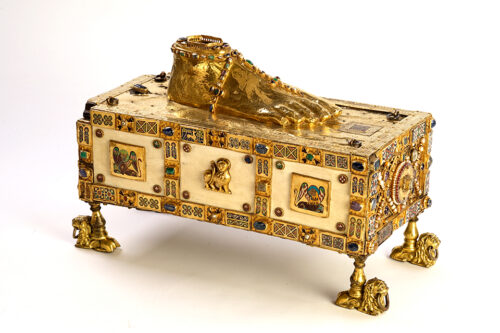
The fact that some originals, such as the Zeno bust from Radolfzell and the arm reliquary of Saint Verena from Zurzach, temporarily return to the museum during the exhibition, demonstrates how closely connected the history of Reichenau and other monasteries on Lake Constance are with living traditions. These are reliquaries which continue to be carried in processions through the cities and villages.
The Island of Reichenau
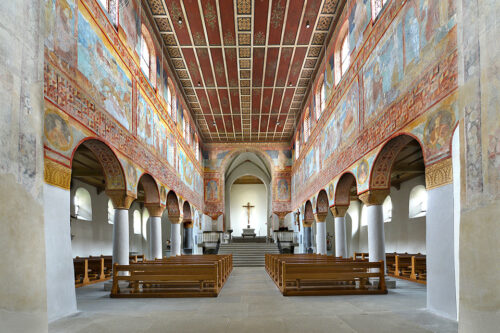
Part of the experience will be a visit to the island where three medieval churches may be visited. The Cathedral of St. Maria and St. Markus, the main abbey church, dates mainly from the 11th century. Also, The treasury is worth a visit. The cathedral is located in Mittelzell, which features a mixture of late medieval and Baroque monastic buildings reused for diverse purposes. At Niederzell in the northwest part of the island, the Church of St. George is worth a visit with its magnificent Ottonian frescoes from the 10th century. Newly restored, the Church the frescoes depict the monastery itself, the miracles of Christ as well as the apostles’. Finally, St. Peter and St. Paul is yet another church, built on top of a Carolingian foundation between 1030 and 1130. This church features a fresco depicting the Heavenly Christ. As part of the anniversary, the Badisches Landesmuseum has organised a major research program leading up to a new permanent exhibition set in the newly built Museum at Reichenau. This exhibition will focus on “Book Art” and include a workshop for calligraphy. The exhibition will be open for visitors between April and October.
The Hortulus
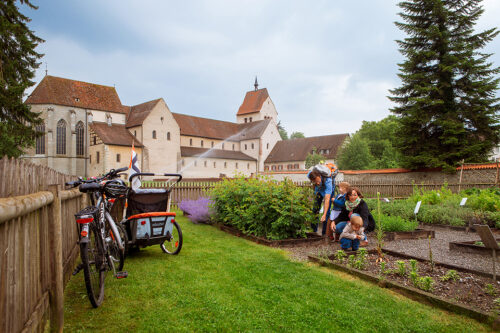
Part of the Reichenau experience will be a visit to the newly designed monastery gardens in the company of Walahfried Strabo, courtesy of a newly developed audioguide by Tanja Kinkel. He was probably the most famous monk, who lived at Reichenau. Born in Alemannia around AD 808, he grew up on the island. In 827 he went to Fulda to continue his education under the supervision of Rhabanus Maurus. Soon after, he was appointed teacher to the young Charles the Bald at Aachen. Later in 838, Strabo returned for a short while to Reichenau as abbot. Due to his connection to Charles the Bald, he had to flee after the death of Louis the Pious, and not until 842, he was allowed to return. The homecoming was helped along by Grimald, the chancellor of Louis the German. To this Grimald, Strabo dedicated his famous poem about the garden at Reichenau, De Cultura Hortorum”, also called Hortulus. In itself, the island used to be a veritable garden, famous for its mild climate, its vineyards and vegetables. Where the causeway meets the mainland is located one of the largest wildlife sanctuaries in Germany.
Satellite exhibitions
The 1300th anniversary is also present in Karlsruhe: Two cooperation partners present their corresponding exhibitions: “Search for Traces – A History of Crime on Reichenau” at the General State Archives shows valuable treasures from the monastery archive from April 26. At the centre of the presentation is the so-called Malefiz book, which records 150 criminal cases from the years 1450 to 1590. They lead directly to the living conditions and conflicts of the people of their time.
At the Baden State Library, thirteen modern artists have been inspired by the artistic heritage of Reichenau. “Old Books – New Inspirations. Artistic Perspectives on the Reichenau Manuscripts” at the Baden State Library from May 15, presents their fresh take on the Medieval heritage. In Karlsruhe Palace, the Baden State Museum in its medieval section offers new perspectives on medieval life in the monastery and everyday life – “Only Pray and Work?”, they ask. Finally, the Archaeological State Museum Baden-Württemberg in Konstanz presents a special exhibition from April 20 with the fitting theme “Archaeology & Playmobil – Monks, Mission, Adventure”.
VISIT:
20.04.2024 – 20.10.2024 Welterbe des Mittelalters – 1300 Jahre Klosterinsel Reichenau.
Konstanz Archäologisches Landesmuseum Baden-Württemberg
Benediktinerplatz 5
78467 Konstanz
Companion Exhibitions
26.4. – 9.8.2024 Spurensuche Eine Kriminalitätsgeschichte der Reichenau Landesarchiv
Baden-Württemberg, Generallandesarchiv Karlsruhe
15.5. – 14.9.2024 Alte Bücher – neue Inspirationen Künstlerische Blicke auf die Reichenauer Handschriften
Badische Landesbibliothek, Karlsruhe
27.4.2024 -? Nur beten und arbeiten? Aspekte klösterlichen Lebens in der Sammlungsausstellung Mittelalter
Oberrhein Badisches Landesmuseum, Schloss Karlsruhe
20.4.2024 ? Archäologie & Playmobil – Mönche, Mission, Abenteuer Archäologisches Landesmuseum Baden-Württemberg, Konstanz
CATALOGUE:
READ ALSO:
